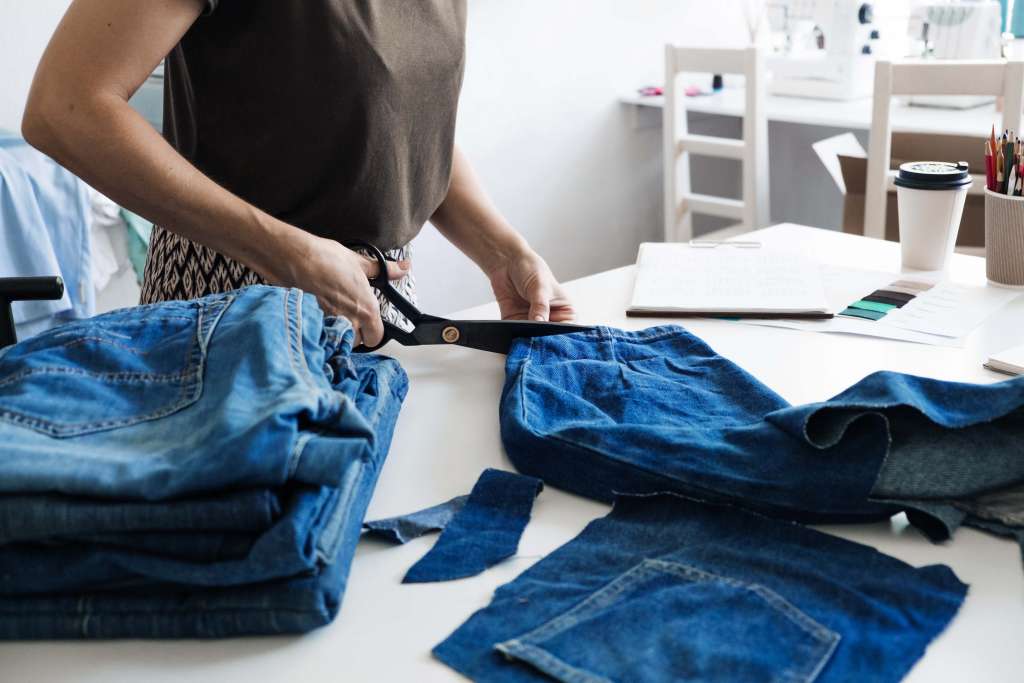How to Determine the Size Wise Cut Quantity in an Order Using the Size Ratio?



Any item of clothing that we wear will have a corresponding size number. Clothes stores supply their racks with items based on the industry standard for sizing. A consumer shops for clothes in the size that works best for their body. This blog will discuss the clothing size ratio and how to calculate size-wise cut quantity from this ratio in order.
What is a Size Ratio?
Typically, a clothing manufacturer will receive a PO for adult shirts in sizes Small (S), Medium (M), Large (L), and Extra Large (XL). The minimum order quantity differs based on the size of the item. Small orders of, let's say, 100 units, Medium orders of 200 units, Large orders of 200 units, and Extra Large orders of more than 100 units would yield a ratio of 1:2:2:1. There are a few places in clothing production where the size ratio comes in handy.
1. Purchase quantity of order items
Sometimes, a buyer will specify the size ratio and the total number of units required in a purchase order. Based on the provided ratio and the overall order quantity, manufacturers determine the number of each size of garment that must be created. Therefore, the factory must adhere to the size ratio specified by the buyer in the PO when ordering different trims.
2. Marking and cutting
The size ratio is taken into consideration when planning markers. The total amount of fabric consumed for an order is computed based on the ratio.
3. Distribution and packaging
Ratio packing, in which all garment sizes are packed in a carton according to size ratio, is frequently requested by fashion buyers. On occasion, it's necessary to employ assortment packing, in which poly bags contain more than one size of given clothing of the same hue.
Two mediums, two larges, and one extra-large item must be packed together if the specified packing size ratio is M: L: XL = 2:2:1. Having the garments packaged in predetermined ratios is convenient for retailers when distributing them to their stores.
4. Retail establishments
Clothing stores stock items in various sizes because they know their consumers will be looking for something that fits them in multiple ways. They are also mindful of the most popular size. For each size, the quantity of potential buyers varies.
How to Determine the Size Wise Cut Quantity in an Order Using the Size Ratio?
Manufacturing companies that specialize in bulk orders receive many orders of the same kind of clothing. A provider of garments for such large quantities must be able to accommodate a wide range of sizes. The tiny, medium, and large versions all share the same basic structure. The total order quantity and quantity broken down by size can be found on the buyer's purchase order. At times, purchasers fail to supply a detailed quantity breakdown by size. They instead provide the information below.
- clothing order quantity,
- size breakdown, and
- the proportion of sizes to be produced

To determine the amount in size, you must first select the ratio. Quantity can be derived from ratios by mathematical computation. Clothes makers determine the total number of each size at the time of the cut order plan.
Listed below are the procedures that can be employed when calculating the size-wise quantity.
- Sum up all of the ratios. Here, they are- 1:2:2:1, so 1+2+2+1=6.
- Simply divide the order quantity from the ratios' summation (here 6).
- Multiply the outcome with the ratio of a specific size.
This formula is used for conversion from ratio to quantity.
Quantity of a size = (order quantity X ratio of the particular size)/ (Sum of the ratio of all sizes)
Let's use the data mentioned above as an example. The quantity of size-based cuts will be:
Quantity in S = (10000 /6) *1 = 1666.66 = 1667
Quantity in M = (10000 /6) *2 = 3333.33 = 3333
Quantity in L = (10000 /6) *2 = 3333.33 = 3333
Quantity in XL = (10000 /6) *1 = 1666.66 = 1667
The above computation is relatively simple to perform using an Excel spreadsheet. Create a table by entering formulas. Update the pertinent cells with the information after receiving an order and a size ratio to determine the precise amount of material that needs to be cut.
Organizational success requires focusing on reducing "whole process cost," not just "lay count" or "fabric utilization." Because of the improbability of the scenario, scientific and operational research tools are required to find a solution. The total price tag accounts for everything from the initial investment in materials and labor to the final price after markup, distribution, cutting, fabric end loss, packaging, labeling, and sizing.
Ironically, reducing the cost of disseminating information could lead to an increase in the price of reducing it elsewhere or vice versa. When optimizing the "total process cost," it is impossible to minimize all components involved simultaneously.
For instance, when the fabric is expensive or in short supply, minimizing its use becomes a top priority. However, completing the cutting process as quickly as possible becomes the top priority when the material arrives late, or the order is behind schedule.
Plan Cut is a multi-objective optimization problem. It is called the Pareto Optimality Problem in mathematics. The interplay of so many dimensions results in many optimal Cut Plan solutions. As a result, there is a variety of, sometimes competing, measurements:
- The extreme size mixing is maximized while using less fabric. This becomes especially important when the large order quantity and the cloth are pricey.
- The time and effort required to do the task are reduced, and costs are reduced due to fewer laying.
- Fewer Markers - Reducing the Need for Manual or Computer-Aided Design (CAD) Preparation of Markers. This is especially helpful if the order's fulfillment requires a steady commitment of sewing machines and workers.
- More Equalized Production - Reducing Layer Height Variation Between Laid Eggs. This issue must be resolved when the order quantity is small and the time and money spent on creating markers are high compared to spreading and cutting.

More Producing clothing in all available sizes at once is known as "balanced packing."
A sourcing manager has a lot of responsibility, from monitoring trends to coordinating with suppliers. Fashinza takes care of everything from start to finish in production to reduce your workload.
Our use of AI and data science radically alter how businesses search for and purchase products.
From inception to completion and delivery, we've got you covered. The production process can be automated with the help of Fashinza.com in a way that emphasizes teamwork, efficiency, and care for the environment.



















